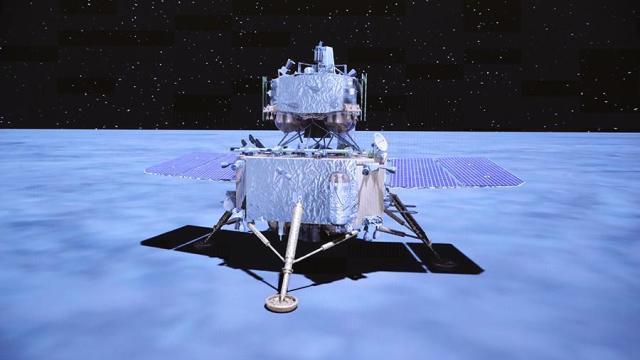The age of the glass microparticles found in lunar soil samples coincides in time with several of the largest asteroid impacts on EarthMOSCOW, September 28.
/tass/. Planetary scientists have found microparticles of glass in samples of lunar soil collected by the Chinese probe Chang'e-5, whose age coincides with several of the largest asteroid impacts on Earth. They include a celestial body that killed the dinosaurs 65.5 million years ago, the press service of the Australian University of Curtin reported on Wednesday.
"We have comprehensively studied how and when the microscopic glass spheres we found in the lunar soil were formed. We found that many of them were exactly the same age as when particularly large asteroids fell to Earth. These include the object that left the Chicxulub crater and killed the dinosaurs," said Alexander Nemchin, a professor at Curtin University in Perth (Australia), whose words are quoted by the press service of the university.
In November 2020, the Changzheng-5 launch vehicle was launched from the Wenchang Cosmodrome on Hainan Island. She sent the Chang'e-5 spacecraft to the Moon, which returned to Earth about 23 days after launch, collecting about 2 kg of lunar rock for study by Chinese specialists both for scientific purposes and for a project to prepare for the construction of a research base.
Professor Nemchin and his colleagues made an extremely unusual discovery linking the stories of asteroid impacts on the Earth and the Moon, during the analysis of the contents of these samples of lunar soil and rocks. Inside these samples, scientists have found a large number of microscopic glass balls that occur in nature as a result of falling asteroids or other small celestial bodies.
Lunar traces of asteroids
Their discovery gave scientists one of the first opportunities to study how often the surface of the Moon has been bombarded by asteroids in the last two billion years, which is the part of the Ocean of Storms where Chang'e-5 landed and took soil samples at the end of 2020. To do this, scientists studied the structure and composition of these spheres, and also measured their age by the fractions of lead, uranium and thorium atoms present in the glass.
Using this information, Professor Nemchin and his colleagues divided the sets of glass particles into groups according to their composition and age. Subsequent analysis of these sets of spheres unexpectedly indicated that the age of many of these groups of particles coincided exactly with the formation of several of the largest impact craters on the Earth's surface.
In particular, planetary scientists have collected a large number of glass microspheres that originated about 65-68 million years ago and 34-35 million years ago, simultaneously with the formation of the Chicxulub and Popigai craters on Earth. Similarly, scientists have discovered many particles that originated in the Ordovician period, 460-480 million years ago, when a large number of objects from the main asteroid belt fell to Earth.
As the researchers suggest, these fragments of glass could get to the Moon as a result of their ejection from the Earth's surface, and as a result of the fact that the fragments of these asteroids fell not only on our planet, but also on its natural satellite. Both make the fossil traces of asteroids on the moon especially interesting to study, Professor Nemchin and his colleagues summed up.

